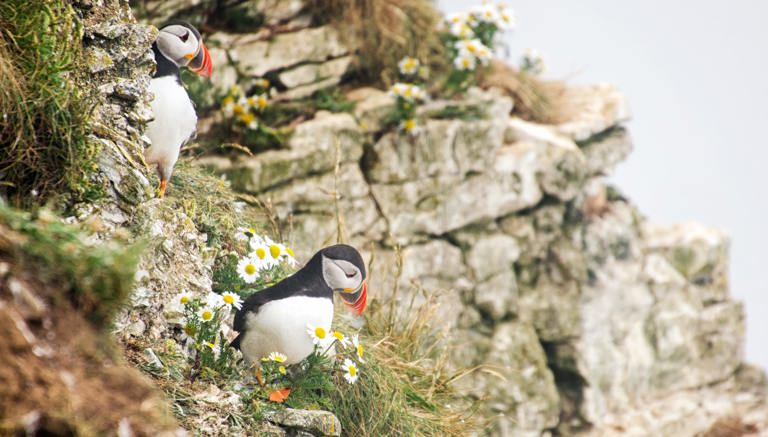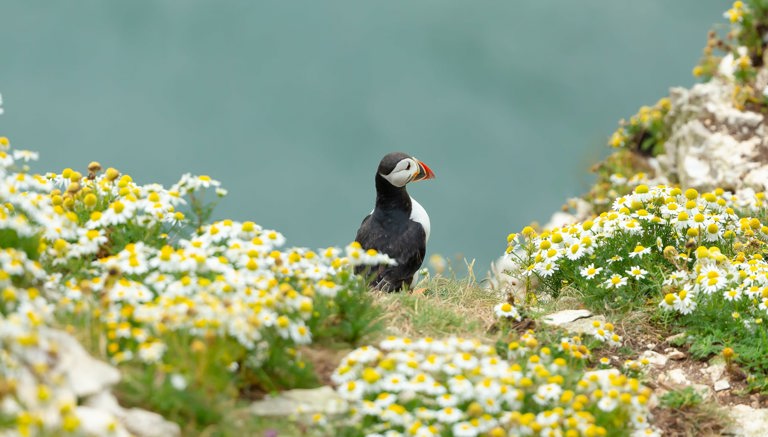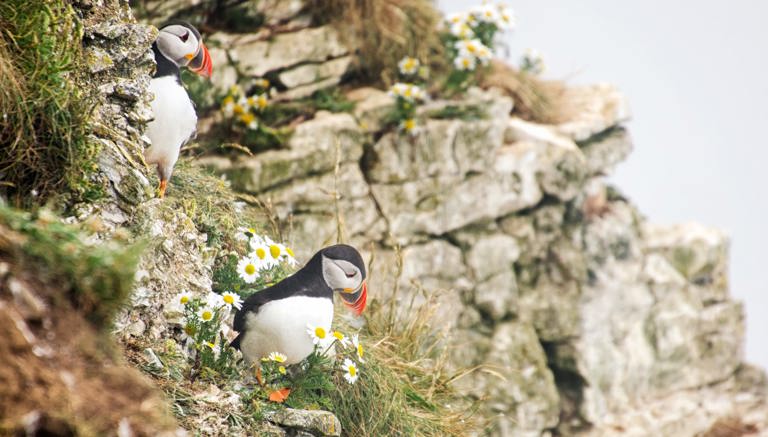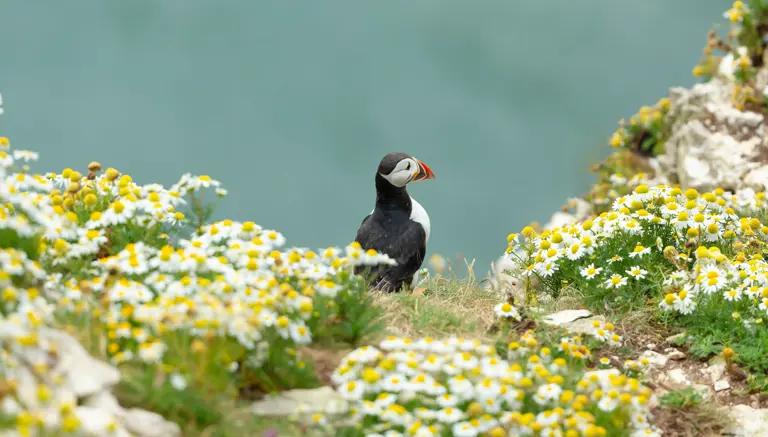A Guide to Bempton Cliffs
3/04/2024
Bempton Cliffs form part of England's largest seabird colony between Flamborough Head and Filey. A family favourite, Bempton Cliffs are easily the best place in England to see, hear and smell seabirds!
More than 200,000 birds (from April to August) make the cliffs seem alive – with adult birds bringing food to their nests, or young chicks making their first faltering flights
The hard chalk cliffs at Bempton are relatively resistant to erosion and offer lots of sheltered headlands and crevices for nesting birds. Bempton Cliffs run about 6 miles from Flamborough Head north towards Filey and are over 100 metres (330 ft) high at points.
The Birds
With huge numbers of birds to watch at Bempton Cliffs, beginners can easily learn the difference between gannets, guillemots, razorbills, kittiwakes and fulmars. The easily recognisable puffins are always a delight.
About 4,000 pairs of puffins return to Bempton Cliffs to breed. Each pair lays a single egg in a crevice in the rock face. The best time to see the puffins at Bempton Cliffs is between May and early July when they regularly visit their young with small fish. By August, the young puffins have left Bempton Cliffs to spend the winter on the North Sea.
Bempton Cliffs has the largest mainland gannet colony (gannetry) in Britain. Over 1,630 pairs nest on the cliffs. Gannets can be seen here from January to November, but they are most active between April and August when they are breeding. They will travel up to 60 miles (100 kilometres) from the colony to find food. When fishing gannets can dive from heights of up to 130 feet (40 metres), entering the water at up to 60 mph (95 kph). You may see some diving for food not too far out to sea.
Six other species of seabirds nest at Bempton Cliffs. Kittiwakes are the most numerous, with 75,000 pairs packed onto the cliffs.
Look out for the distinctive gliding flight of fulmars around Bempton Cliffs. They may look like gulls, but are members of the petrel family. About 800 pairs nest on the ledges. Herring gulls and a few shags also nest on the cliffs. This member of the gull family can be most easily identified by its 'kittiwaak-kittiwaak' call. Guillemots and razorbills also nest on the narrow cliff ledges. Guillemots are browner than razorbills and have long, dark dagger-like bills. Razorbills have broader, flattened bills, with a vertical white line near the tip.
You can watch the 200,000 seabirds LIVE on CCTV through the breeding season from March to October. Meet the RSPB information assistants and hear about the live action, watch it for yourself on the two TV screens and enjoy close-up images of the nesting gannets.
Opening times
The reserve is open from dawn until dusk. From March to October, the visitor centre is open daily from 9.30 am to 5 pm, and from November to February, 9.30 am to 4 pm.
Entrance charges
Entry is free of charge to members of the RSPB all year. There's a charge for non-members of £8 per adult and £4 per child.
New to birdwatching...
The birds are easy to see during breeding season - creating a fantastic seascape and bird spectacle. Only eight target seabird species breed here, so learning to identify birds is simple. In winter, common passerines (buntings, sparrows and finches) and short-eared owls (vary in numbers from one year to next) can be seen and identified.
Information for families
Reserve already popular with families. Various family events included in our programme throughout the year. Backpack Activity days very popular.
Information for dog owners
Dogs are welcome on the reserve, however they must be kept on leads at all times. This is to ensure that ground nesting birds are not disturbed, and also to ensure the safety of dogs on the cliff top.




